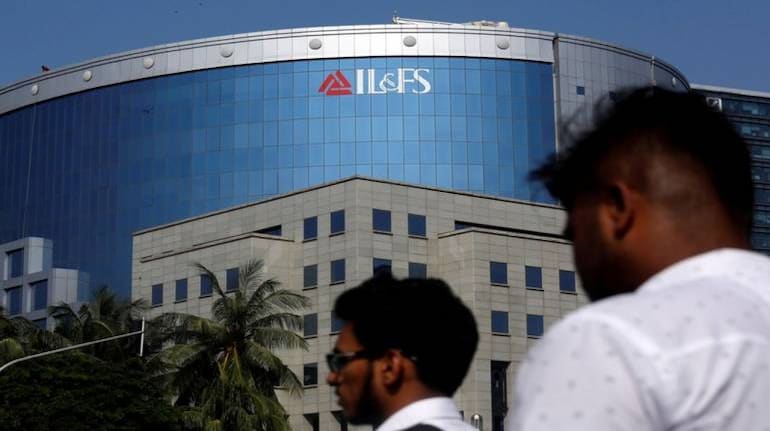



Infrastructure Leasing & Financial Services Ltd (IL&FS) said on Wednesday that it had been able to resolve debt amounting to Rs 55,000 crore as of March-end, which accounts for around 90 percent of its estimated Rs 61,000 crore resolution target.
The company’s board made the announcement at a press conference. Also at the event, veteran banker Uday Kotak, who headed the board and spearheaded the rescue team, said he would step down from the IL&FS board effective April 2.
Subsequently, the Centre appointed C.S. Rajan, managing director (MD) at IL&FS, as the new chairman and MD for a period of six months beginning April 3.
As Rajan takes over the helm of the crisis-ridden company, Moneycontrol answers five questions on how the board worked on the debt resolution process at one of India’s biggest conglomerates:
To begin with, what went wrong with IL&FS?IL&FS stepped into trouble after one of its subsidiaries, IL&FS Transportation Networks Ltd, defaulted on a loan repayment in 2018. The default sent shockwaves through the Indian financial sector, forcing banks to turn extra-cautious in their loan exposure to all non-banking financial companies (NBFCs).
After the default, multiple domestic rating agencies downgraded the company’s debt. Other IL&FS group companies subsequently began defaulting on their dues.
Considering the size of the company and its interconnectedness with the banking world, the National Company Law Tribunal (NCLT) allowed the government to take over the board of IL&FS. The government formed a new governing board under Kotak. This was, arguably, the biggest corporate rescue after the bailout of Satyam Computer Services Ltd in 2009. The government replicated the model to rescue IL&FS.
What was the fallout of the IL&FS debt default?A severe liquidity crisis in the non-banking financial industry followed the default as banks suddenly shut lending channels to several NBFCs barring the top ones. The markets were spooked over the health of the NBFC sector as a whole. The Reserve Bank of India had to step in with emergency measures to ensure adequate liquidity in the banking system.
RBI came to NBFCs’ aid by announcing special Targeted Long Term Repo Operations (TLTRO). A sum of Rs 50,000 crore was made available at the policy repo rate for tenors of up to three years under the TLTRO programme.
Medium and large NBFCs including Dewan Housing Finance Corp and Reliance Capital Ltd, among others, were the worst hit by the liquidity crisis.
How far has the IL&FS resolution progressed?Until March-end, the infrastructure giant has been able to resolve debt amounting to Rs 55,000 crore. This is equal to 90% of overall estimated debt resolution value of Rs 61,000 crore.
Of the total resolved debt of Rs 55,000 crore, Rs 21,000 crore has been discharged by way of monetisation of assets and debt repayments. The group has another Rs 20,000 crore in the form of cash and units in Infrastructure Investment Trusts; debt amounting to Rs 14,000 crore is presently before different courts for which Rs 7,500 crore has already been approved and transaction closure is underway.
Why is the debt resolution good news?As of October 2018, IL&FS had fund-based and non-fund-based debt of over Rs 99,000 crore; the Rs 61,000 crore targeted debt resolution represented 62 percent of overall liabilities.
The overall resolution estimate of 62 percent is double the average recovery of 31 per cent under the Insolvency and Bankruptcy Code (IBC), according to the latest newsletter of the Insolvency and Bankruptcy Board of India (IBBI)
“This has been largely possible due to the continued commitment of the New Board and the Management to preserve value in assets of national importance and maintaining going concern status,” the IL&FS board said on Tuesday.
IL&FS may even surpass the 62 percent debt resolution target, Kotak said.
What is the next step in IL&FS’s debt resolution process?The rescue team is optimistic about a quick resolution of the remaining debt. According to the IL&FS management, the pending Rs 6,000 crore of debt will be taken over for resolution in the next fiscal year, which begins on April 1. As of March end, of the 347 entities of IL&FS, the debt of a total of 246 companies stands resolved; the debt of the remaining 101 group companies will be resolved in the next fiscal year.
To be sure, challenges lie ahead. State governments not paying dues on time, delays in receipt of annuities, and a complex web of multiple legal proceedings being held simultaneously are among the key challenges that lie in store, the board said.
Discover the latest Business News, Sensex, and Nifty updates. Obtain Personal Finance insights, tax queries, and expert opinions on Moneycontrol or download the Moneycontrol App to stay updated!
Find the best of Al News in one place, specially curated for you every weekend.
Stay on top of the latest tech trends and biggest startup news.